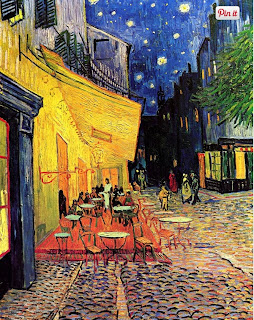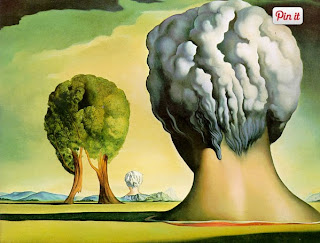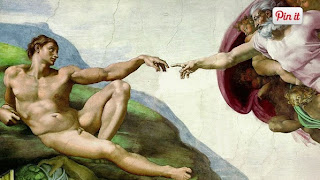I chose this painting because of the lines creating the wood. The faces on the wood bring this painting to life.
I chose this picture because the green stuff go straight up in lines. This looks sharp.
This painting has different type of shapes. It has a lot of squares and cylinders.
I chose this picture because of the mesmerizing circles. They all connect in a pattern.
Color- wheels show the primary colors, secondary colors, and the tertiary (intermediate) colors. They also show the relationships between complementary colors across from each other, such as blue and orange; and analogous (similar or related) colors next to each other such as yellow, green, and blue. Black and white may be thought of as colors but, in fact, they are not. White light is the presence of all color; black is the absence of reflected light and therefore the absence of color.
This painting has wonderful colors. The night sky looks beautiful and the color of the floor gives the stone light from the things around it.
I chose this picture because of the colorful lights lighting the parkway. It almost looks like a rainbow.
Value (Tone)- refers to dark and light; the value scale refers to black and white with all gradations of gray in between. Value contrasts help us to see and understand a two-dimensional work of art.
I wonder why the painter put flowers in his hand. This painting shows the two-dimension of the person about to throw the flowers.
I chose this picture because it shows the gray bringing thing picture to life.
Form- describes objects that are three-dimensional, having length, width, and height.
I chose this picture because of the 3-D is shows of the man holding the shine ball.
I chose this picture because it shows the dimension of the building from the bottom.
Texture- can be rough, bumpy, slick, scratchy, smooth, silky, soft, prickly--the list is endless. Texture refers to the surface quality, both simulated and actual, of artwork.
I chose this painting because i like how smooth the flower looks.
I chose this picture because how the fruit looks. I just can't tell if its soft or pointy.
Space-refers to distances or areas around, between, or within components of a piece. Space can be positive (white or light) or negative (black or dark), open or closed,shallow or deep, and two-dimensional or three-dimensional.
I chose this painting because of the way the thing seems to go far back.
I like the way this picture makes it look like the railways go to far off in the distance.
I chose this painting because on the symmetricalness of the soup cans. I really looks the same on both sides.
I chose this picture because of the color. It looks like the yellow thing is going to suck up the green liquid.
Contrast- is created by using elements that conflict with one another. Often, contrast is created using complementary colors or extremely light and dark values. Contrast creates interest in a piece and often draws the eye to certain areas. It is used to make a painting look interesting.
I chose this picture because painting because how the shading make the painting look real.
This picture has dark and light colors but it doesn't look as great as the painting, it looks more plan.
Emphasis- in the focal area of an artwork gives it importance. An artist may stress some elements of the design over others. The eye of the viewer will focus on the area of emphasis or center of interest first, then take in the rest of the composition.
I chose this painting because the painting focuses on the villagers. They are the main focus of this painting.
I chose this picture because the was the clown fish pops out the most from its bright colors.
Movement- in an artwork means the artist is taking viewers on a trip through the work by means of lines, edges, shapes, and colors often leading to the focal area. Movement is a visual flow through the composition. It can be the suggestion of motion in a design as you move from object to object by way of placement and position. Directional movement can be created with a value pattern. It is with the placement of dark and light areas that you can move your attention through the format.
This painting is quite awkward but it shows the old man and reaching out fort the younger man.
I chose this picture because the smoke looks like it is flowing down the path.
Pattern- are made in art when the same shapes or elements are repeated again and again. Pattern uses the elements of art in planned or random repetitions to enhance surfaces of paintings or sculptures.
I chose this picture because it repeats the soup can over and over and over again.
I chose this picture because it also repeats its shape of the triangles.
Rhythm- is the repetition of shapes, lines, and forms. Rhythm is a movement in which some elements recurs regularly. Like a dance, it will have a flow of objects that will seem to be like the beat of music.
I chose this painting because is uses the same lines and forms to create the building.
I chose this picture because of the repetition of the burgers.
This painting has similar shapes all around it. It also uses more than just the same shape.
I chose this picture because zebras are wonderful creatures. These zebras look a similar to each other just the a different position.

















































